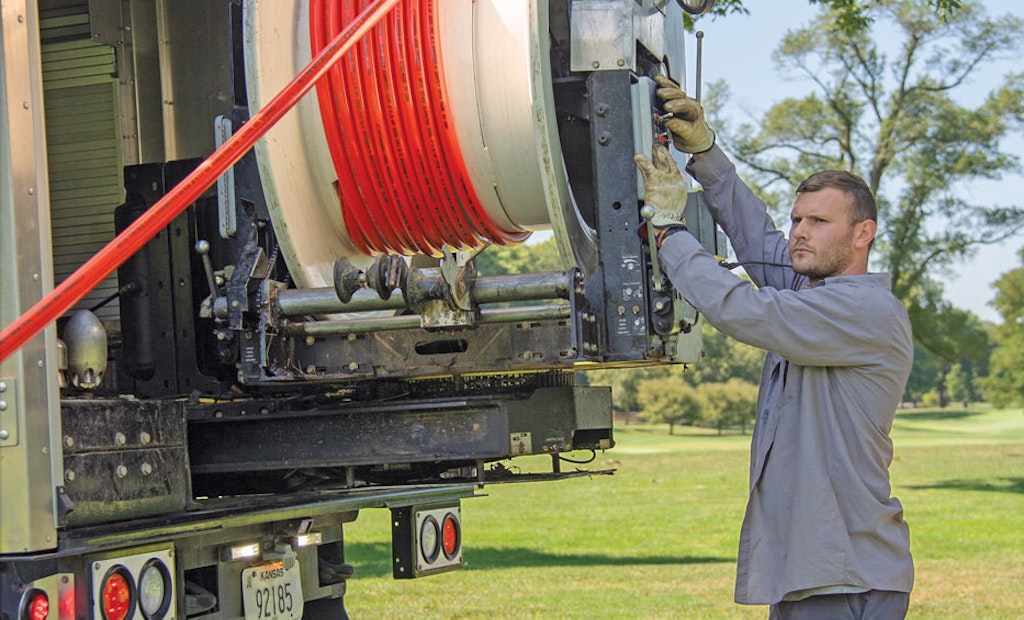
Johnson County Wastewater staff member Tanner Shelby operates the jetter controls on a Vactor Ramjet truck while cleaning a sewer line. (Photography by Denny Medley)
Management of the sewer system in Johnson County, Kansas, is no guessing game.
Johnson County Wastewater is employing a data-based tool that enables the agency to identify and prioritize critical maintenance and repairs and to maximize the life of the pipes in its collections...










